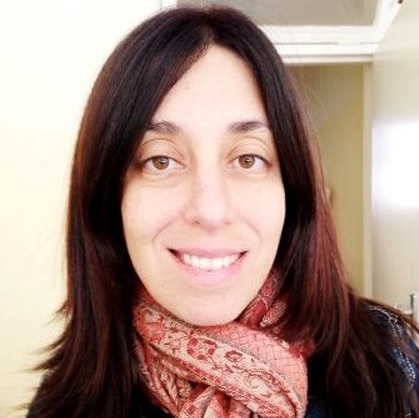
Parshot/Festivals

Bringing a modern consciousness to ancient prayers
ADINA ROTH
This prayer speaks about the awesome potency of the period between Rosh Hashanah and Yom Kippur, how G-d looks at our souls, and how our fate lies in the balance. The prayer also contemplates life’s impermanence, the human being’s fleeting presence against incomprehensible eternity. The prayer ends with the resounding U’Teshuva, U’Tefillah, U’Tzedakah, Ma’avirin et Ro’a Ha’gezeirah.
It is perhaps this line which presents a challenge to us modern Jewish people. We have experienced enough suffering in our world to question whether it is true that “enough” teshuvah, prayer, and charity can, indeed, change the inevitability of sickness or death. With the memory of the Holocaust still resonant, having seen children become ill and pass away, and many, many good people die before their time, it becomes harder to trust that if we just get this formula right, G-d’s hand will be stayed.
At Limmud this year, I heard Conservative Rabbi Ed Feinstein raise this very concern about the prayer. He suggested that the word ma’avirin should not be read as “cancel” or “avert”. Using older, medieval readings, he suggested that the word be read as “mitigate” or “alleviate”. In other words, repentance or introspection, prayer, and acts of kindness and justice can assist a person to cope with what comes our way.
In a Viktor Frankl (existentialist psychologist) universe, it is not that these actions will change our outer reality, but they will help us bear what comes our way, perhaps even changing ourselves for the better in the process. Feinstein’s reading is borne out by modern translations of this line. For example, the Artscroll (1985), the most commonly used machzor in South Africa, translates the line as, “But repentance, prayer, and charity remove the evil of the decree”, instead of the evil decree. Koren similarly refers to ro’a hagezeirah as the evil of the decree. This subtle difference in translation implies that the evil decree might not be erased, but its character of evil will become in some ways bearable through these actions. In other words, it is not the decree that changes, but ourselves.
If we work with this modern reading, teshuvah, tefillah, and tzedakah become a powerful formula for coping with life in general, and with difficult circumstances in particular. Teshuvah, the act of “returning” to one’s deeper soul-calling, and tzedakah, seeking to do goodness, kindness, and justice in this world, appeal to our modern intuitions.
The modern movement of psychotherapy has shown the benefits of living a more examined life, and we know that people who think of others and do acts of kindness feel better about themselves and the world. But what of prayer? Many among us have doubts about G-d’s existence. And even so, how would prayer alleviate the evilness of suffering?
I am reminded of two thinkers who write about tefillah in ways that suggest prayer is as much about improving and making the soul more sensitive as it is about appealing to G-d for assistance. Rabbi Abraham Joshua Heschel writes that prayer is about empathy. He explains that the words on the page are not supposed to speak to us, we are expected to reach out of ourselves, to make an effort to understand the prayer on the page. In other words, prayer is supposed to pull us out of “me-consciousness” into the consciousness of the other, or in the words of Emmanuel Levinas, the Infinite Other.
Rabbi Elie Kaunfer of Mechon Hadar makes a slightly different case for prayer. He argues that prayer is poetry and metaphor. He explains that in order to understand Jewish prayer, we need always to return to its sources, to look at the Biblical and Talmudic references which weave into a prayer. He says just as we don’t read a poem at face value, but we spend time getting to know it, to understand its allusions and to contemplate it, prayer requires the same kind of attention and effort.
If prayer is an invitation to empathise and a calling to language sensitivity and subtlety, we can understand why Heschel said very famously, “Prayer may not save us. But prayer may make us worthy of being saved.”
Thus, indeed, teshuvah, tefillah and tzedakah may not save us, but all may make us the kind of people who are worthy at the level of the soul of being saved.
The above interpretation may appeal to the modern sensibility, but Judith Hauptman, a professor of Talmud at the Jewish Theological Seminary, warns against imposing a purely modern consciousness onto the prayer.
Hauptman shows that the early Talmudic sources influencing this prayer reflected an assumption that these actions would not merely change a person, but could actually alter reality. I appreciate Hauptman’s challenge. We come from a long line in our Jewish tradition, from rabbis to village-folk, who believed that the power of prayer, self-examination, and good action could indeed change the reality of one’s life. It would be to our detriment to come with a modern arrogance that claims their beliefs were mistaken. We cannot simply wipe transcendence out of this prayer, the possibility that G-d is indeed listening, that our actions do have an impact on the universe in some way.
Perhaps, as we pray this Rosh Hashanah, we may rely more on the modern interpretations of U’netaneh Tokef, that good action helps make our lives more liveable and improves us as human beings. But let us hold in mind that we are moderns, and that we have but a place in universe and in time. Let us remember, even if just through a whisper, that our tradition understands the greatness and exaltation and mystery of G-d, and places faith and hope both in the possibility of transcending our inner reality, and in the very real possibility that life itself might be transformed.




